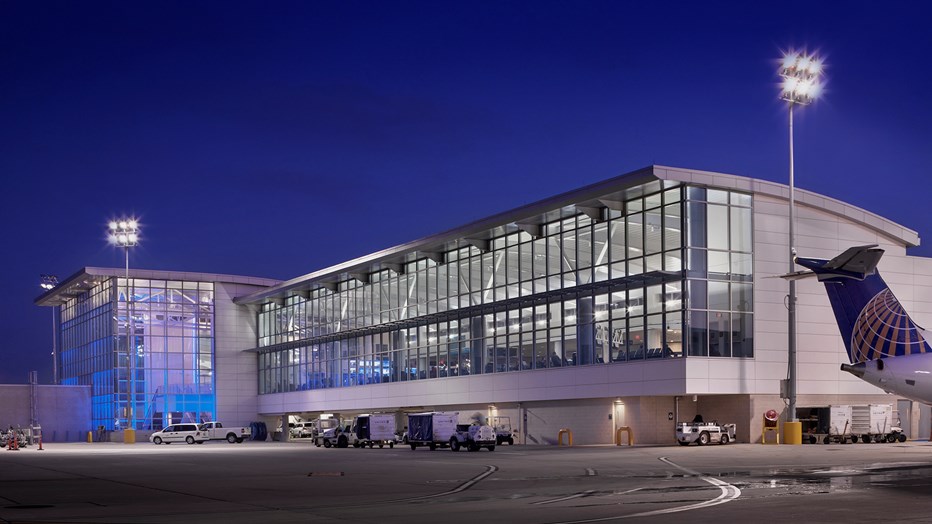George Bush Intercontinental Airport (IAH) is the largest US hub for United Airlines. The airline’s plan to expand its global network includes the $1 billion renovation of Terminal B at IAH. The overall Terminal B Redevelopment Program will be designed and built in three major phases. When finished, the new Terminal B South complex will offer 71 Regional Jet (RJ) and narrow body capable gates and 1,600,000-SF of hold room, concessions and support areas, and a new Federal Inspection Services (FIS) facility.
The first of two phases, the Terminal B Redevelopment Program abated various hazardous substances including asbestos and demolished the existing 34,500-SF facility that was built in 1969, and was configured for 19 RJ parking positions. This facility has been replaced with a new, 225,000-SF, three-level structure – ramp, concourse and mezzanine – connected to three ramp level boarding piers. The new facility increased the current south side parking positions from 19 to 30 RJs. In addition, enhanced customer amenities, including spacious hold rooms and upgraded concessions offerings, are part of the design.
The United Air Lines Terminal B Redevelopment program cost $150 million and opened in late 2013. The expansion enhanced the customer experience in the gate area. Technology advances mean that United will introduce a high-efficiency boarding process designed to handle up to 30 flights to depart through three main boarding zones. The new gate layout will provide better flexibility for future fleet changes by the airline and incorporate energy friendly systems.
The Bush Intercontinental Airport project was delivered by the project team utilizing alternative delivery techniques that in many ways resembled a hybrid of CMAR. Though the subcontract agreements executed with 80 separate trade contract scopes were on United instruments; Skanska had project responsibility for schedule, procurement, logistics, budget/cost/GMP, LEED and project construction phase execution.





